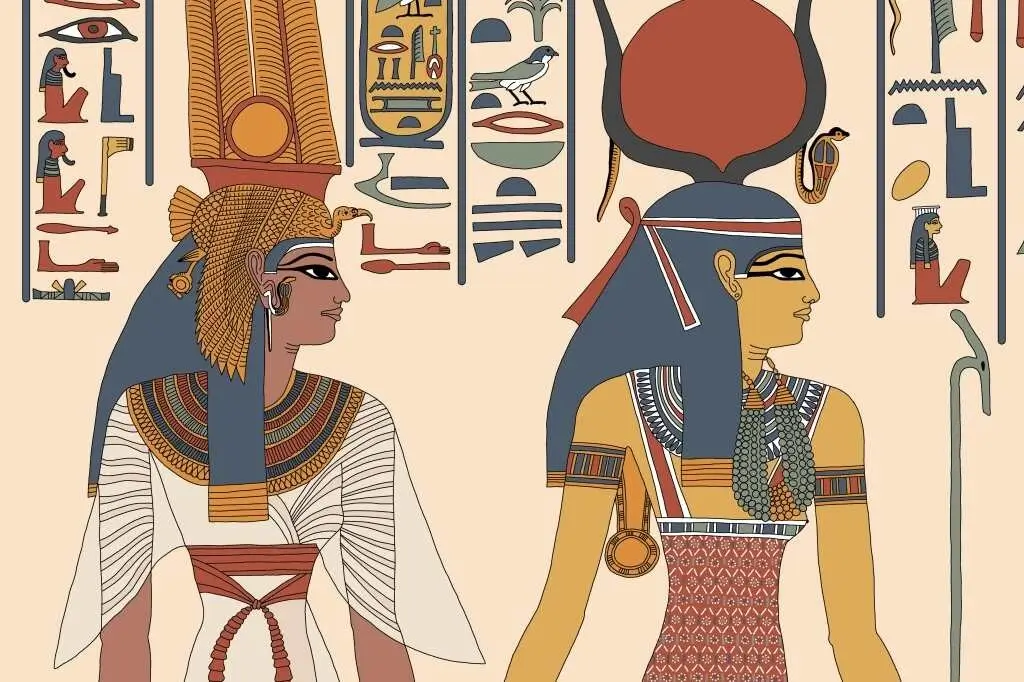Nefertari Egypt

Nefertari Egypt
Nefertari Egypt – even the name whispers elegance, power, and mystery. As the beloved queen of Ramesses II and one of the most celebrated figures in ancient Egyptian history, Queen Nefertari remains a towering figure in both historical accounts and artistic memory. Her grandeur is not just carved into the golden walls of her tomb; it’s stitched into the very fabric of Egyptian legacy.
From the towering statues of Abu Simbel to the luminous paintings in her Theban tomb, Nefertari’s story isn’t just a chapter in Egypt’s saga—it’s a testament to the brilliance and grace women held in the ancient world. Her legacy has enchanted scholars, tourists, and creatives across centuries, and her story continues to unfold in the most surprising of ways.
Birth of Queen of Egypt
Despite her immense presence in Egyptian art and architecture, the exact details of Nefertari’s birth remain shrouded in mystery. Historians suggest she was born in Thebes around 1300 BCE, but her family origins have yet to be fully uncovered. Unlike queens who were born of royal blood, Nefertari’s rise appears to have been driven more by personal merit and political significance than simple lineage.
Some Egyptologists propose she may have belonged to a noble family or had priestly connections, possibly linked to the temple of Amun. Regardless of her origin, Nefertari quickly rose through the ranks of the royal household, becoming Ramesses II’s principal wife early in his reign.
Marriage to Ramesses II
Queen Nefertari’s marriage to Ramesses II was not just a union of love—it was a political alliance of immense consequence. Ramesses, often hailed as “The Great,” ruled during one of Egypt’s most prosperous and powerful dynasties—the 19th Dynasty. He married several women during his reign, but Nefertari held the most prestigious title of them all: The Great Royal Wife.
Their union was celebrated not just in palatial halls but on temple walls. Ramesses left no doubt about his affection and admiration for Nefertari, praising her in inscriptions with titles like “The One for Whom the Sun Shines.” In a realm where kings were often remembered more than queens, Nefertari defied the norm by being immortalized alongside him.
Etymology of “Queen of Egypt”
The name Nefertari means “Beautiful Companion” or “Most Beautiful of Them All” in ancient Egyptian. More than just a name, it was a brand—an identity that resonated deeply with the divine and the regal.
Her full name, Nefertari Merytmut, translates to “Beautiful Companion, Beloved of Mut.” Mut was a mother goddess in the Theban triad, associated with queenship, divine femininity, and motherhood—attributes Queen Nefertari embodied throughout her life and afterlife depictions.
Political Influence
Far from being a figurehead, Queen Nefertari wielded real political influence. She was not only Ramesses II’s confidante but also acted as a diplomatic envoy. Evidence from the Hittite peace treaty and correspondences with foreign rulers suggests that Nefertari played a role in maintaining diplomatic harmony—something rare for queens of the time.
Unlike other consorts, Nefertari’s role in politics was visible and influential. She had her own court, her own scribes, and most importantly, a presence in state affairs, as shown in inscriptions found across Egypt.
Religious Authority
Nefertari didn’t just walk among mortals—she mingled with gods. She was often portrayed as a priestess, participating in sacred rituals, sometimes even depicted making offerings to deities like Hathor, Isis, and Maat.
One of her key roles was as a spiritual bridge between Ramesses and the gods. In art, she appears performing rituals, an indication of both her divine association and authority. These portrayals underscored her role as a queen who protected and nurtured Egypt not just politically, but spiritually.
Queen of Egypt in Temples
Among the most breathtaking tributes to Nefertari is her appearance at Abu Simbel, where she is shown standing shoulder to shoulder with Ramesses II. A statue of her stands over 30 feet tall—an extraordinary display of reverence that no other queen had received before.
Inscriptions at Abu Simbel describe her with terms typically reserved for goddesses, showcasing her elevated status in both political and religious spheres.
Tomb of Queen of Egypt : QV66
Discovered in 1904 by Italian Egyptologist Ernesto Schiaparelli, Queen of Egypt tomb in the Valley of the Queens (QV66) is often dubbed the “Sistine Chapel of Ancient Egypt.” Its vivid wall paintings, intricate hieroglyphics, and unmatched artistry make it a masterpiece of New Kingdom funerary design.
Though her actual mummy was never found, the contents and inscriptions of her tomb paint a picture of a journey toward divine union in the afterlife. Every wall tells a story: of protection, renewal, and eternal beauty.
Association with Hathor
Nefertari was closely associated with Hathor, the goddess of music, love, and motherhood. In her temple at Abu Simbel, she is shown in Hathor’s likeness—wearing the goddess’s headdress and making offerings in her honor.
This divine connection further elevated her status, blending queenly authority with spiritual embodiment. It wasn’t just symbolic—it was political, reinforcing her role as divine protector of Egypt.
Peace and Diplomacy
One of the most remarkable aspects of Nefertari’s queenship was her involvement in diplomatic affairs. She corresponded with the Hittite Queen Puduhepa, exchanging jewelry, gifts, and letters that promoted peace after years of warfare between the two empires.
Her letters reflected a refined, intelligent, and composed individual—a queen who wielded both elegance and eloquence in equal measure.
Ceremonial Duties
In court life, Nefertari oversaw rituals, festivals, and public ceremonies. She was Egypt’s first lady in every sense, leading processions, overseeing temple dedications, and serving as the ceremonial heart of the New Kingdom.







Awesome https://is.gd/tpjNyL
Экзотические маршруты и экскурсии.
Оферти за екзотични почивки [url=http://ekzotichni-pochivki.com/]http://ekzotichni-pochivki.com/[/url] .
Very good https://lc.cx/xjXBQT
Good https://lc.cx/xjXBQT
Good https://t.ly/tndaA
Good https://rb.gy/4gq2o4
Основы программирования контроллеров Siemens, основные принципы.
Лучшие практики программирования контроллеров Siemens, методы.
Преимущества TIA Portal в программировании контроллеров Siemens, все, что вам нужно знать.
Типичные ошибки в программировании, освойте.
Как спроектировать систему автоматизации с Siemens, для достижения успеха.
Топ контроллеров Siemens на рынке, параметры.
Лучшие языки программирования для контроллеров Siemens, для разработки.
Лучшие решения автоматизации с контроллерами Siemens, для производства.
Будущее контроллеров Siemens, в ближайшие годы.
Как разработать интерфейс для контроллера Siemens, полезные рекомендации.
Запрограммировать Siemens [url=https://www.programmirovanie-kontroller.ru#Запрограммировать-Siemens]https://www.programmirovanie-kontroller.ru[/url] .
Как использовать антистресс игрушки.
Играчки антистрес [url=https://antistres-igrachki.com/]Играчки антистрес[/url] .
Куклы бебета с аксессуарами и одеждой.
Бебета кукли [url=https://www.kukli-bebeta.com/]https://www.kukli-bebeta.com/[/url] .
Very good https://is.gd/N1ikS2
Awesome https://is.gd/N1ikS2
Awesome https://is.gd/N1ikS2
Пошаговая инструкция по получению разрешения на работу, необходимый этап, обязательно нужно знать.
Работа за границей: что нужно знать о разрешении, пошаговые советы.
Требования для получения разрешения на работу, разбираем.
Что делать, если истекает разрешение на работу, рекомендации.
Как студенту получить разрешение на работу, необходимые документы.
Ошибки при получении разрешения на работу, рекомендации.
Разрешение на работу в разных странах, различия.
Перечень документов для разрешения на работу, обязательные документы.
Как получить разрешение на работу без отказа, полезные рекомендации.
Права работника с разрешением на работу, подробности.
Ускорение процесса получения разрешения на работу, полезная информация.
Разрешение на работу для фрилансеров, рекомендации.
Проверка готовности разрешения на работу, пошаговая инструкция.
Разрешение на работу для родителей-одиночек, необходимая информация.
Как подготовиться к интервью за разрешение на работу, полезные советы.
Налогообложение для работников с разрешением, разъяснения.
Работа с инвалидностью: разрешение на работу, лучшие практики.
Услуги по оформлению разрешения на работу: что нужно знать, финансовые аспекты.
Как переехать за границу с разрешением на работу, планирование.
Как получить разрешение на работу в условиях кризиса, что учитывать.
документы на разрешение на работу [url=http://www.oformleniernr.ru#документы-на-разрешение-на-работу]http://www.oformleniernr.ru[/url] .